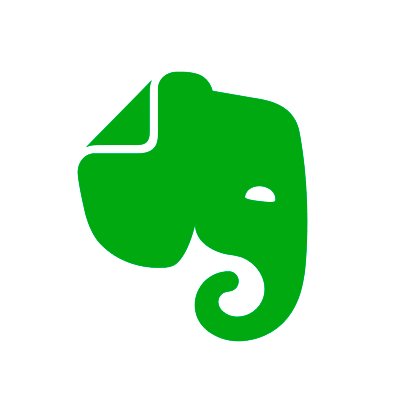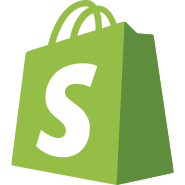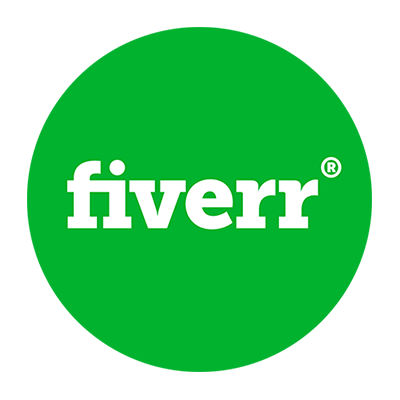
How I Started A $25K/Month Business Selling Tribal Jewellery And Handcrafts From All Over The World
Hello! Who are you and what business did you start?
You could say that Kashgar began through a love of travel.
In 1989 my father Bernard packed in his house painting business and set off for two years on a backpacking trek to the remotest corners of the world. He got as far as the oasis city of Kashgar in far west China and pretty much decided that buying and selling exotic goods was going to become his new business.
Starting in markets in 1991, he opened his first small store in the Sydney suburb of Newtown in 1994. In 2000 I gave up my own career as a government scientist to join him, then convinced my partner Ian to join us - and that’s how we ended up with a family business.
For 2000 years the legendary city of Kashgar was a melting pot of ideas and a key trading post on the historic Silk Road. It was this unique combination of philosophy and exotica that we wanted to recreate at home. During the 30 years that it operated as a bricks-and-mortar high street store, Kashgar stocked a hugely diverse range of furniture, rugs, textiles, antiques, handicrafts, and jewelry sourced from over twenty different countries.
Our collection included basics and practical homeware-type goods as well as the truly bizarre and unique - Shaman’s paraphernalia from Nepal and Thailand, tongue scrapers from Pakistan, cricket cages from Hong Kong, headhunting curios, Buddhist relics and a collection of one-off necklaces, earrings, and bracelets that I design and create using the beads and jewelry making techniques of ethnic minorities from around the globe. Needless to say, we’re very popular with film selts, stylists, and anyone with a taste for the exotic!
Kashgar has recently closed its retail outlet and gone completely online.

What's your backstory and how did you come up with the idea?
Kashgar has always been a philosophy as well as a store. Perhaps because we didn’t start as retailers, had no formal training in commerce and began small by selling at markets, we didn’t really know if there was a right or wrong way to retail. So we largely followed our hearts, which mostly served us well. From the start, we were committed to supporting traditional artisans and small village communities by selling authentic goods that were personally collected by us.
By supporting traditional methods of design and production we hoped to encourage local cottage industries which have a low impact on the environment and help ethnic minorities maintain their self-sufficiency into the 21st Century. We saw our trade as a means of staving off the inevitable encroachment of the 21st century, assisting communities to decide for themselves which parts of the western world they wish to incorporate (medicine, education) and which they wish to reject (prostitution, drug production, begging and servitude to warlords). We also encouraged our customers to think of the handicrafts and artifacts they bought from us as an investment in a piece of history and a way of life.
As I mentioned before, my dad had nothing to lose by taking this approach. He simply built up capital on a weekly basis, until he felt he had enough to open a store, with all the start-up costs that entailed. After that, we let the stock speak for itself.
Take us through the process of designing, prototyping, and manufacturing your first product.
This question isn't so relevant to us, simply because we trade in goods that already exist. We simply had to believe in what we were buying, and have faith in the fact that others would want our assortment of goods too.
Today, some would say that this isn't a particularly good way to go about setting up a business. We were not very goal or outcome-oriented. And as a result, we stayed a relatively small business - at our peak, we had only 3 stores and around 7 employees, including us. This also meant that our business model required a very hands-on approach. A lot of our sales depended on backstory - how an item was collected, what it meant to its original owners. That tied us to our counter more often than not, which could be irksome. But we’ve picked up a lot of knowledge along the way, so much so that we are considered experts in some areas and I am now in the process of writing a couple of non-fiction books.
And I look at our “competitors” over the past thirty years, and with specific regard to the ones that expanded into 9+ stores, warehouses and wholesale businesses can honestly say that financially, I don’t believe that they did much better than us. In regards to lifestyle choices, we got to do a lot of traveling and we connected with a lot of different people, both out there in the world and through our storefront. It’s been a good journey.

Describe the process of launching the business.
Again, regarding startup costs, I’d say my father began with around $40,000 in savings and simply went traveling. When he saw something he liked, he bought it and sent it home (transportation from remote locations has always been our kryptonite). Of course, as we transitioned from markets to a high street store, we needed to set up reliable lines of supply for basics (think incense, candles, scarves, greeting cards, soaps, etc). And once we had suppliers within Australia for these things, we needed to establish lines of credit. We’ve never borrowed money, not once in 30 years. But we do run business credit cards and use them to accrue points to travel on.
Our stock demands touching. People like to pick up our pieces and examine them, feel them in their hands, weigh them up, spend time becoming attached.
We also got a lot of free publicity by appearing in films, magazines, newspaper features, and fashion shows in return for a credit. It helped establish us on the retail map.
Since launch, what has worked to attract and retain customers?
The one place we probably dropped the ball was on marketing. There were two reasons for this. The first was that we did very well without it. The second was that my father, especially as he got older, was very traditional in his approach to retailing and also distrustful of anything to do with social media. And herein lies the problem with going into business with a relative, parent, friend, or in fact any partner that doesn’t share the same outlook on your business. My advice in this regard is always to set up a “sunset” clause or way out if the situation becomes untenable down the track. That’s a little harder with a parent for a partner though.
But we did manage to expand our marketing by creating a website with an online store, and a database with quarterly email newsletters. The newsletters cost nothing except my time and were relatively successful - we had around a 10% open rate, and it definitely generated a lot of return traffic into the store.
We also maintained a call-back book. Customers wanting something particularly special or unusual could leave their numbers and we’d get back to them when we sourced what they wanted, with the caveat that it could take months or even years. I think the longest commission was around 8 years, and yes, the customer came in and bought the piece.
The website - well that’s been an interesting journey. Our website is both our blessing and our curse. Our first website cost a lot to design and a fair bit to maintain. And while it had an online store, we almost never made any sales through it. Why? Two reasons. At least 85% of our stock is unique, literally one-off pieces that can’t be replicated or replaced. I’d spend an hour photographing a piece, photoshopping the outcome, describing, weighing, and measuring the piece, only to come downstairs and find that it had sold ten minutes earlier off the floor.
The other reason is that our stock demands touching. It’s not like ordering an iPhone cover or pair of headphones. People like to pick up our pieces and examine them, feel them in their hands, weigh them up, spend time becoming attached. So while our website could definitely be considered a failure in terms of direct sales, it brought countless stylists, industry buyers, and customers in to look and buy directly.
Our second website is through Shopify, and that’s a different matter. But more on that later.

How are you doing today and what does the future look like?
It’s a little hard to give numbers here because our business went through different iterations - markets, one store, multiple stores, and now solely online. At our retail peak, we were grossing an average of $35,000 a month. After costs including wages, we were showing a minimum profit of $13,000 per month, which we took as bonuses at the end of the year or plowed back into the business.
The Christmas sales gave us all the capital we needed to buy stock for the coming year, which we’d do in one major trip, a couple of minor trips, and via reorders from established stockists both in Australia and overseas. Sometimes contacting our suppliers in remote parts of the world was very challenging.
Pay your bills on time and be respectful to your suppliers, and when the going gets tough, they will give you preferential treatment.
Our hardest and worst retail period was getting through the GFC. We had just invested most of our capital in our usual annual purchase of stock when the crash came. And then, because we sold discretionary goods, no one was buying. We went from healthy trade to hemorrhaging money. At our lowest point, we were taking in around $2,500 a week, when our outgoings were $5,500 a week. Our landlord reduced our rent. We took a pay cut and had to let our staff go. Ian and I were literally living below the poverty line. We cut back on absolutely everything just to get through it.
While we recovered, we never forgot that our sales depended on the mindset of the people. If people believe they are well-off, they’ll spend on discretionary goods. If not, they won't. It’s as simple as that.
As we approached 2017 and the possibility of another economic downturn, we decided to get out of bricks and mortar and try to turn the business into something that exists primarily online. And so we’ve spent the last two years putting that into effect - over 2018/2019 we sold down much of our stock, sold our house, then physically moved out of Sydney (one of the most expensive cities in the world for house prices, commercial rent and living expenses) to a part of Australia that’s a lot more affordable.
It’s 2020 and we are now working on setting up a presence at local markets (returning to our origins really), setting up a warehouse and display space on our property, and making a go of online selling.
Through starting the business, have you learned anything particularly helpful or advantageous?
There are so many things I’ve learned throughout this journey. Pay your bills on time and be respectful to your suppliers, and when the going gets tough, they will give you preferential treatment - they’ll give you longer credit periods, they’ll even place stuff in your store on consignment (this saved our bacon after the GFC).
If you’re going into a collaborative partnership, give yourselves a way out if things go sideways. Don’t invest all your money in new stock, equipment, or even display material and advertising - you can make do and get inventive, and you can buy second hand.
Pay yourself a decent wage as soon as you can so you can invest in a home or other assets that increase in value and are not connected to your business. Don’t be afraid to walk away and cut your losses, with the knowledge that you can come back in another form, at a later time. DON’T throw good money after bad - I’ve seen fellow business owners remortgage their homes to get through a tough period, only to lose that as well.
Have we had luck? Absolutely. But I do believe that the harder you work, the more luck you make, and I also believe that by being kind and adhering to the highest standards of integrity, other people, even customers, will really look out for you. We’ve been given rent reductions, we’ve been extended credit terms, we’ve been given stock on consignment, we’ve had people go out of their way to help us through difficult patches.
Have trends assisted us? Very rarely because our stock is so unique and individualistic. But after the GFC we lost our complacency, took more notice of local and worldwide trends in all sorts of areas, then correctly predicted that everything would turn to shit in 2019/2020 (not Covid-19, though, that’s been a doozy) and got the hell out, ready to begin again in the future.
What platform/tools do you use for your business?
Our biggest asset and cost at the moment is our website. We’ve maintained it throughout the transition. We are on the Shopify US$79/month plan. In 2019 we had a very limited product catalog online and made a total of 20 sales with a gross of $1,330 - not our finest year of trade, I have to admit.
This past month, we’ve started dedicating a large amount of time to the website - SEOing and adding lots more products that are saleable - and to social marketing (Facebook and Instagram). So far this year we've had 31 sales totaling $2,755, an increase of 111% over last year. So it’s growing, but I have a lot of work left to do.
Once the website is looking good, we’ll start email campaigns again, targeting all our old Sydney shop customers. But the biggest problem will always be that people like to touch our stuff, feel it and look at it. I’m not sure how to get around that, and I’m not sure where to look for advice.
Marketing companies promise the world but rarely deliver when it comes to solving specific problems. Shopify offers no assistance - we’ve attended their get-togethers and read their blogs, but they really flounder when it comes to offering anything other than the painfully obvious - make your packaging pretty, offer free shipping, set up AfterPay, that sort of thing.
Selling through regional markets was proving to be very successful, prior to Covid-19, and I look forward to getting back to them. Because we have so much unique stock, people really do love to buy from us, although setups and takedowns take forever - that’s part of the nature of what we sell.
We are still in the process of setting up a display area on our property and have high hopes for it in the future when people can resume normal travel again.
Pay yourself a decent wage as soon as you can so you can invest in a home or other assets that increase in value and are not connected to your business.
And as a side note - because so much of our stock requires an explanation, I started creating information sheets for our staff and our customers - very nice to give along with a gift that has a spiritual element to it. These then became full-blown, researched articles published to the website, which have gone on to have a life of their own. My articles generate over 1 million page views a year and are republished and referenced all over the world.
How to generate sales from them though is another matter, and I’d appreciate any advice that anyone might have for me out there. I am engaged in writing a couple of books right now, so we’ll see whether I can generate an income out of that in the future.
What have been the most influential books, podcasts, or other resources?
Honestly, I tend not to read marketing books. All of my influences come from historical travelers and academic writers like Mary Beard. Gaining a Ph.D. by research also helped, because it, and my schooling taught me that I could do anything if I put my mind to it and my back into it.
Advice for other entrepreneurs who want to get started or are just starting out?
Apart from the points I’ve already made, I’d say the biggest thing is to just go for it. You don’t have to have a perfect business plan or the ultimate source of funding. Sometimes that can lead to unrealistic expectations and also send you in directions you don’t necessarily want to go, just to please others with established ways of thinking.
One thing I’ve discovered through our choice of stock and my choice of writing subjects is that no one else can predict what is going to be popular, or successful, and if you only follow safe paths, you may miss huge opportunities, the change for personal satisfaction and the next big thing.
Where can we go to learn more?
If you have any questions or comments, drop a comment below!

Download the report and join our email newsletter packed with business ideas and money-making opportunities, backed by real-life case studies.

Download the report and join our email newsletter packed with business ideas and money-making opportunities, backed by real-life case studies.

Download the report and join our email newsletter packed with business ideas and money-making opportunities, backed by real-life case studies.

Download the report and join our email newsletter packed with business ideas and money-making opportunities, backed by real-life case studies.

Download the report and join our email newsletter packed with business ideas and money-making opportunities, backed by real-life case studies.

Download the report and join our email newsletter packed with business ideas and money-making opportunities, backed by real-life case studies.

Download the report and join our email newsletter packed with business ideas and money-making opportunities, backed by real-life case studies.

Download the report and join our email newsletter packed with business ideas and money-making opportunities, backed by real-life case studies.





































